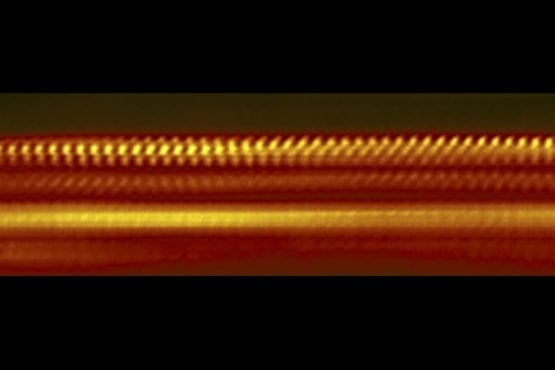Tiny Chips Use Outsize Power
For decades, the power of computers has grown at a staggering rate as designers have managed to squeeze ever more and ever tinier transistors onto a silicon chip — doubling the number every two years, on average, and leading the way to increasingly powerful and inexpensive personal computers, laptops and smartphones.
Now, however, researchers fear that this extraordinary acceleration is about to meet its limits. The problem is not that they cannot squeeze more transistors onto the chips — they surely can — but instead, like a city that cannot provide electricity for its entire streetlight system, that all those transistors could require too much power to run economically. They could overheat, too.
The upshot could be that the gadget-crazy populace, accustomed to a retail drumbeat of breathtaking new products, may have to accept next-generation electronics that are only modestly better than their predecessors, rather than exponentially faster, cheaper and more wondrous.
Simply put, the Next Big Thing may take longer to arrive.
“It is true that simply taking old processor architectures and scaling them won’t work anymore,” said William J. Dally, chief scientist at Nvidia, a maker of graphics processors, and a professor of computer science at Stanford University. “Real innovation is required to make progress today.”
A paper presented in June at the International Symposium on Computer Architecture summed up the problem: even today, the most advanced microprocessor chips have so many transistors that it is impractical to supply power to all of them at the same time. So some of the transistors are left unpowered — or dark, in industry parlance — while the others are working. The phenomenon is known as dark silicon.
As early as next year, these advanced chips will need 21 percent of their transistors to go dark at any one time, according to the researchers who wrote the paper. And in just three more chip generations — a little more than a half-decade — the constraints will become even more severe. While there will be vastly more transistors on each chip, as many as half of them will have to be turned off to avoid overheating.
“I don’t think the chip would literally melt and run off of your circuit board as a liquid, though that would be dramatic,” Doug Burger, an author of the paper and a computer scientist at Microsoft Research, wrote in an e-mail. “But you’d start getting incorrect results and eventually components of the circuitry would fuse, rendering the chip inoperable.”










